Affiliate disclosure: This post may contain affiliate links. Please see our Privacy Policy.
Identifying wild asparagus is easier than you think, and the problem is, finding it in the right season. Asparagus isn’t foraged you see, it’s stalked…long before it’s ready the hunt begins.
While the harvest season for wild asparagus begins in early spring, the search for wild asparagus happens year-round. It’s a lot easier to find out of season when the plant is far too large to harvest. Mark those spots, and you’ll know just where to find it when the young tips are tender next spring.
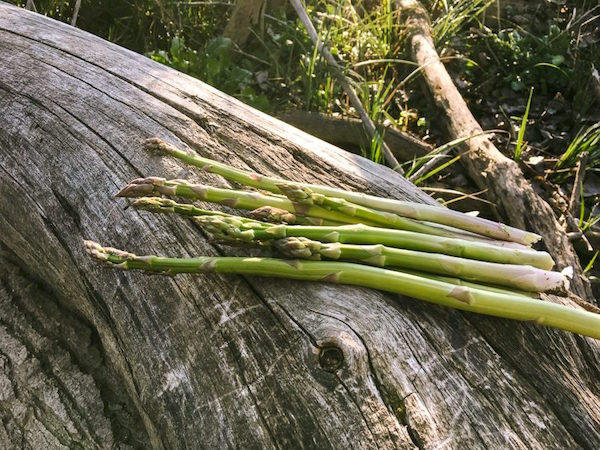
Wild Asparagus is an incredibly tasty edible plant to forage in spring, but I’m going to let you in on a little secret…
There’s nothing wild about wild asparagus. It’s actually more like “feral asparagus,” but that doesn’t have the same ring to it.
It’s not native to the US, and it came over with the first settlers from Europe. They planted it in their gardens, and once it started going to seed those cultivated plants went feral.
Birds spread asparagus seeds, and particularly love the bright red asparagus “berries” that shine in the summer sun as the fronds wave in the breeze.
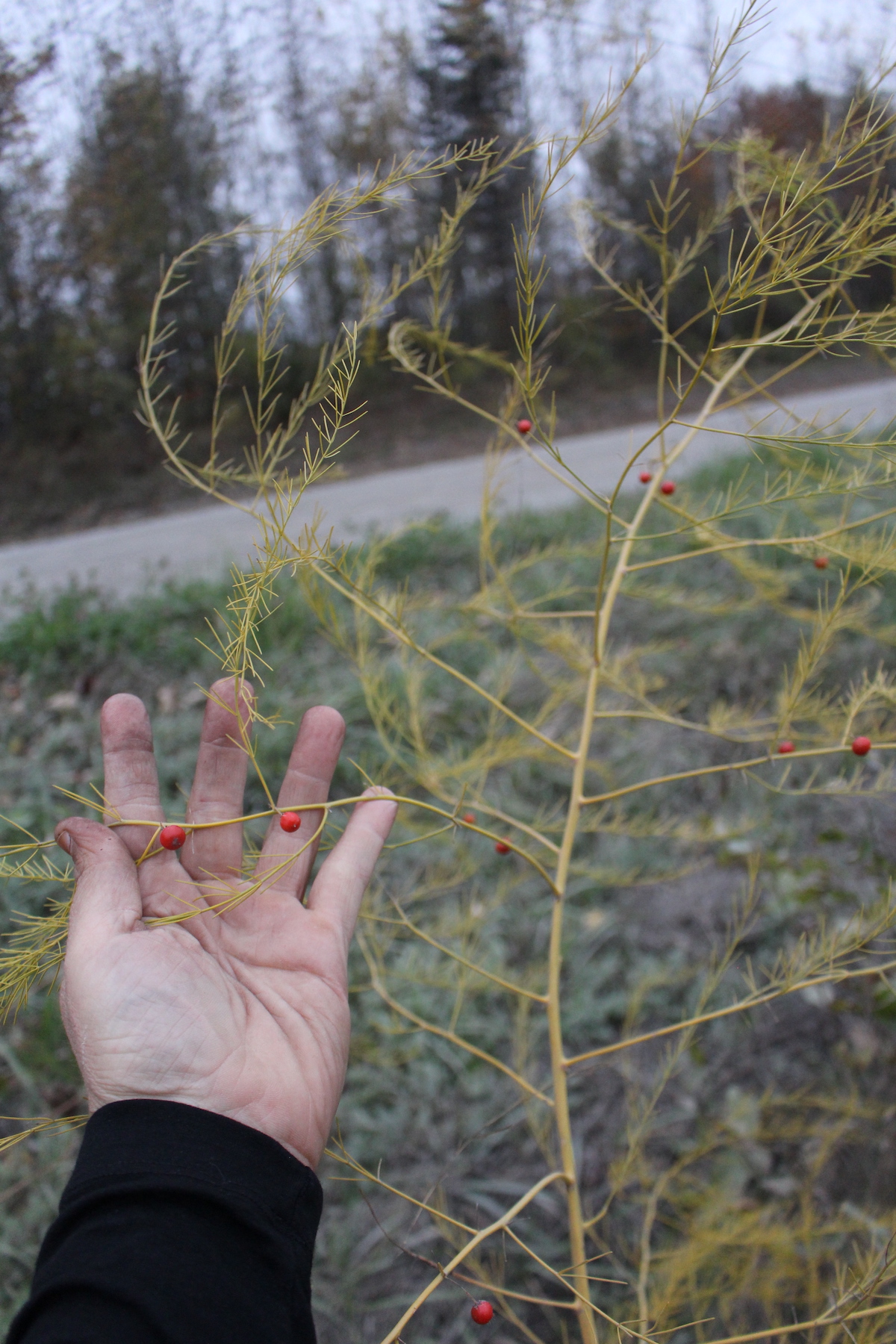
I suppose you could say the same thing about many of the plants we forage here on this continent. They’re “wild” now, but they weren’t always.
Japanese knotweed, for example, was brought over for ornamental plantings. It is stunningly beautiful in flower, but it’s also so incredibly invasive that it’s almost impossible to kill. Add in the fact that it produces thousands of wind-born seeds each year, and you have yet another “feral” garden crop to forage.
(Japanese knotweed is edible, and it’s even cultivated and preserved in Japan. Just like shade-loving garden hostas, which are another garden crop here that’s traditionally eaten in Japan….learn something new every day!)
Anyhow, wild or not is more of a technicality. It can be found and harvested in the wild, even if it did originally escape from great grandma’s garden. The thing about wild asparagus is it tends to taste much better than any other, which makes it quite the prize.
Why does wild asparagus taste so good?
First, wild asparagus is impeccably fresh. Grocery store asparagus has been sitting there for a week or more, and it’s well past prime even in the best of cases.
Second, it’s had to work for its living. Even if you harvest asparagus fresh from the garden, it’s not quite as tasty as wild asparagus. At least, in my opinion.
Plants produce compounds in their tissues in response to stress and predation, and many of those compounds are incredibly tasty to humans, not to mention nutritious. These phytochemicals are more concentrated in plants that aren’t coddled. Plants that have to work to stretch to the sun, combat weeds, and struggle just a bit in sub-optimal soil.
Take a little adventure in stalking wild asparagus and you’ll be rewarded with the tastiest spring vegetable that money cant buy.

How to Find Wild Asparagus
Anyone familiar with foraging or has any background relating to a culture involving crunchy granola, wheatgrass, or Birkenstocks is probably aware of the infamous forager Euell Gibbons, and his book, Stalking the Wild Asparagus.
His book is aptly named because wild asparagus isn’t like other wild foods that you forage for, hunting them on a day trip or stumbling across them on adventures. Asparagus is herbaceous, meaning the plant dies back to the ground in the winter.
It’s near impossible to stumble across tender spears, emerging from the ground from their ancient crowns. They don’t easily reveal themselves to the casual passerby.
Instead, the wild asparagus is stalked. You need to know the signs, looking for its tracks, stalking months, even seasons, before.
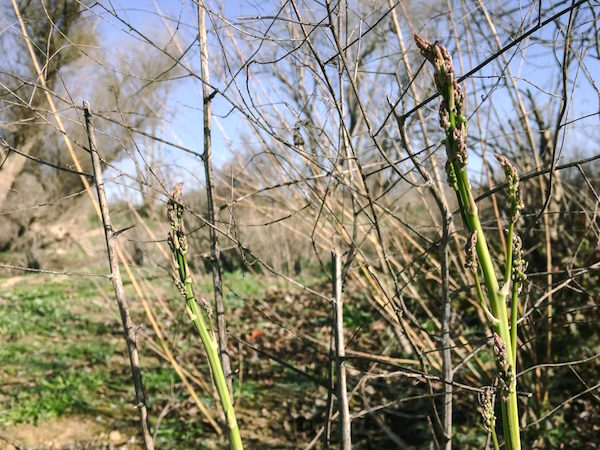
The best time to find wild asparagus is at the height of summer, or in the early autumn.
In summer, wild asparagus is a large bushy plant that can grow 6 feet tall (or more). A single crown will often have a spread of 3 or more feet wide, making it an imposing bush of fluffy asparagus fronds.
They’re often easy to spot sticking up out of the tall grass, as they tend to outstretch even the tallest goldenrod. As a perennial that stores its nutrients underground, wild asparagus gets an early headstart on the season and it’ll stay ahead of the surrounding foliage.
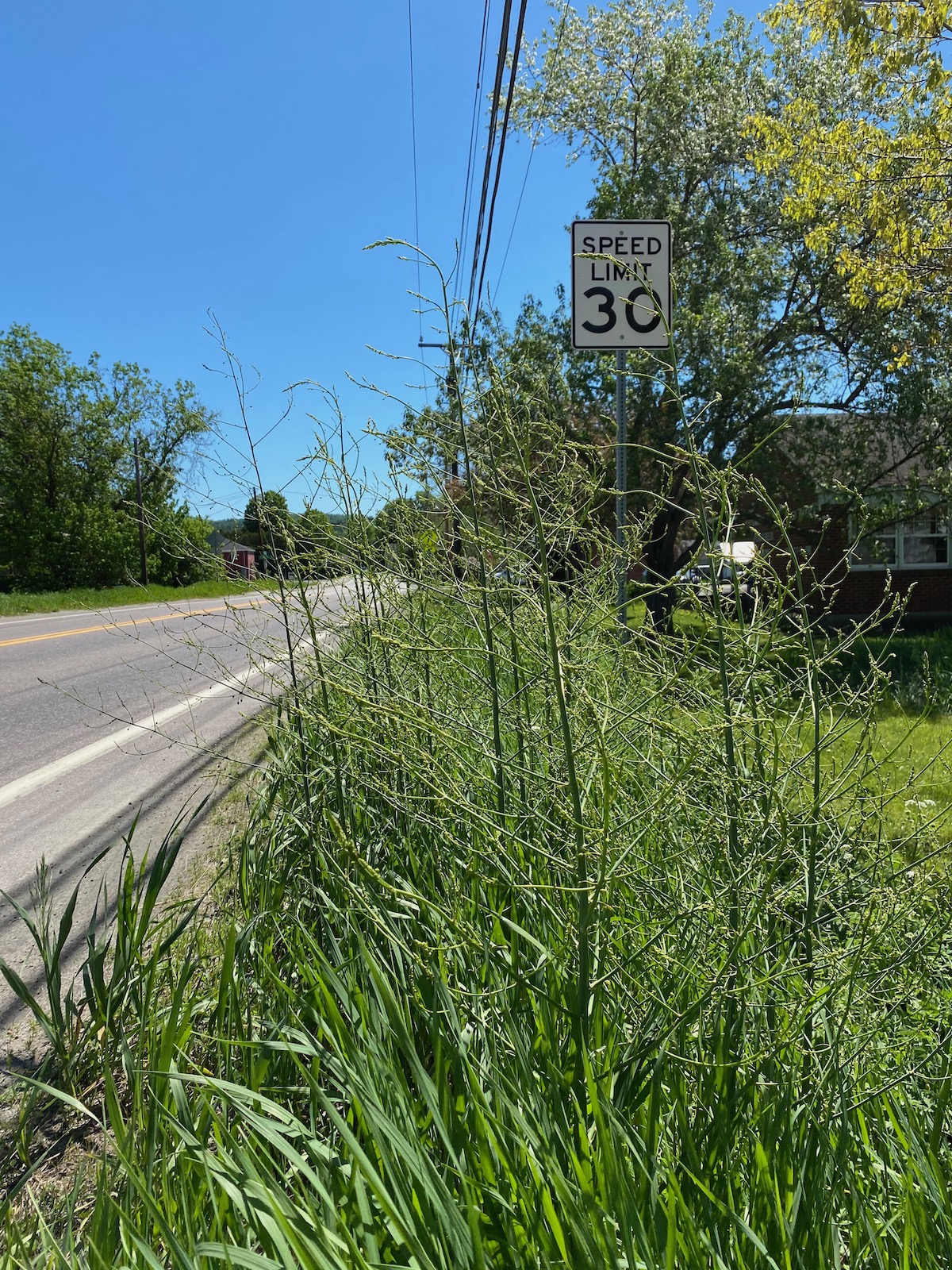
In the summer months, you can often spot wild asparagus patches along roadsides, at the edges of woodlands, and just about anywhere that gets good sun but a mower can’t regularly reach.
I’ve spotted them growing up through the playground fence at our local elementary school, and the crown had adapted itself to grow long instead of its normal round habit. The mower clipped off everything growing more than a few inches from the fence, so that resourceful little plant adapted.
Right up against a busy road isn’t the best spot to harvest anything, especially a tender young green. Too much runoff and pollution. Spotting them there just gives you a good idea of what to look for in more out-of-the-way locations.
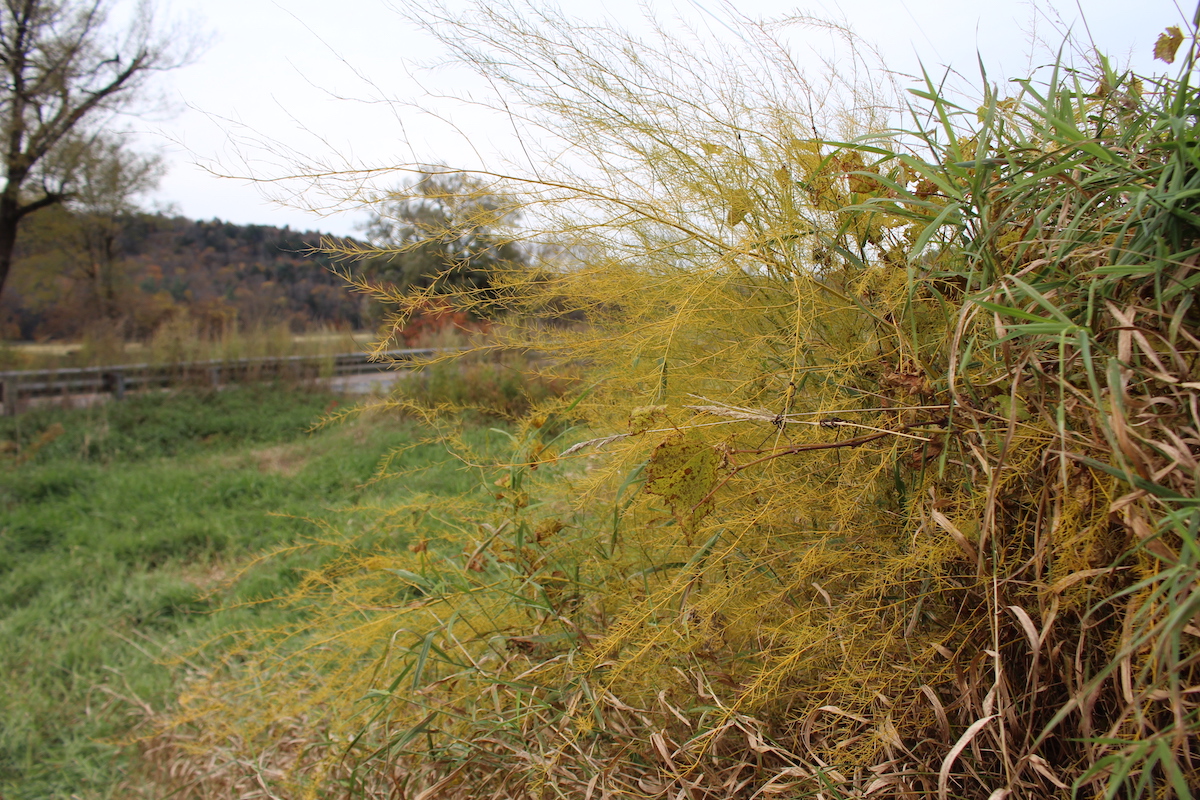
Where to Find Wild Asparagus
Wild asparagus is established just about everywhere in North America, from Canada down into Mexico and coast to coast. Just about anywhere you can garden, asparagus can escape that garden and establish itself in any spare nook in the landscape.
You will find wild asparagus growing in the sun and close to (but not in) water. Look in drainage ditches, edges of marshes, or along river or stream edges. They do not like saltwater. Unless you are on a rarely used rural road, I’d avoid any that are growing roadside.
It appreciates moist soil and full sun, so it’s common at the edges of clearings in the woods, and along hiking trails that get good sun exposure.
You’ll find the spears poking out of the soil in early spring, which will obviously vary from place to place. In my area in Northern California, it’s right around the second week of February. In Vermont, it’s usually the last week of May or the first week of June.
In more moderate latitudes, wild asparagus season will be somewhere in between.
A good time to start looking is right about when you see the first spears of local asparagus hit your town’s farmer’s market. Ideally, you’ve found a good patch sometime the previous summer or autumn, and that’s just when you’d go back to it to harvest the spears.
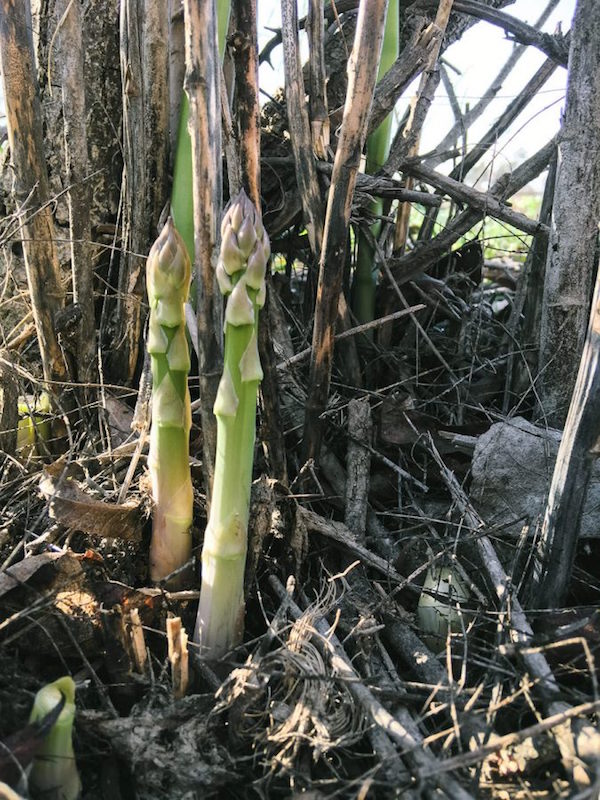
How to Identify Wild Asparagus
So here’s the tricky part…wild asparagus is in fact, asparagus. Identifying wild asparagus is no different than identifying garden asparagus, or grocery store asparagus for that matter.
The problem is, few people have actually seen asparagus growing (in the wild or in the garden).
Case in point…
I was out stalking wild asparagus in the autumn, marking locations where the bright yellow fronds could be seen from a long-distance away. Another hiker walked up to me, and I knew him for a neighbor. Not only a neighbor but a neighbor who gardens and eats real food. He came up to me and asked me what I’d found.
This is actually how the conversation went…
“Asparagus,” I said.
“Aspara-what? Is it poisonous?” He asked.
“It’s wild asparagus. It’s exactly the same as the asparagus you’d buy in the grocery store. You know, in the spring.”
“Are you sure it isn’t poisonous?” He asked again.
The conversation went on like that for some time. He just couldn’t wrap his head around the fact that those tender spring asparagus stalks actually have a plant that grows all season, and develops into something that looks completely different from the neatly banded bundles of asparagus in the grocery store.

During harvest season, wild asparagus looks like short spears coming out of the ground. It’s often surrounded by last years stalks, which are dead and brown.
Later in the summer, it’ll take on a more “fern-like” look. The stalks are 4 to 6 feet tall, and the base of the plant is often as wide as 3 feet across. If multiple plants are growing in a patch it can be even larger.
Young wild asparagus plants will be smaller, and are often just a few thin stalks. It’s best to allow those to grow larger for a few more years before harvesting.
Generally, wild asparagus season overlaps with the chokecherry blossoms in a given area. That can be late winter in warmer areas, or early summer up here in Vermont.
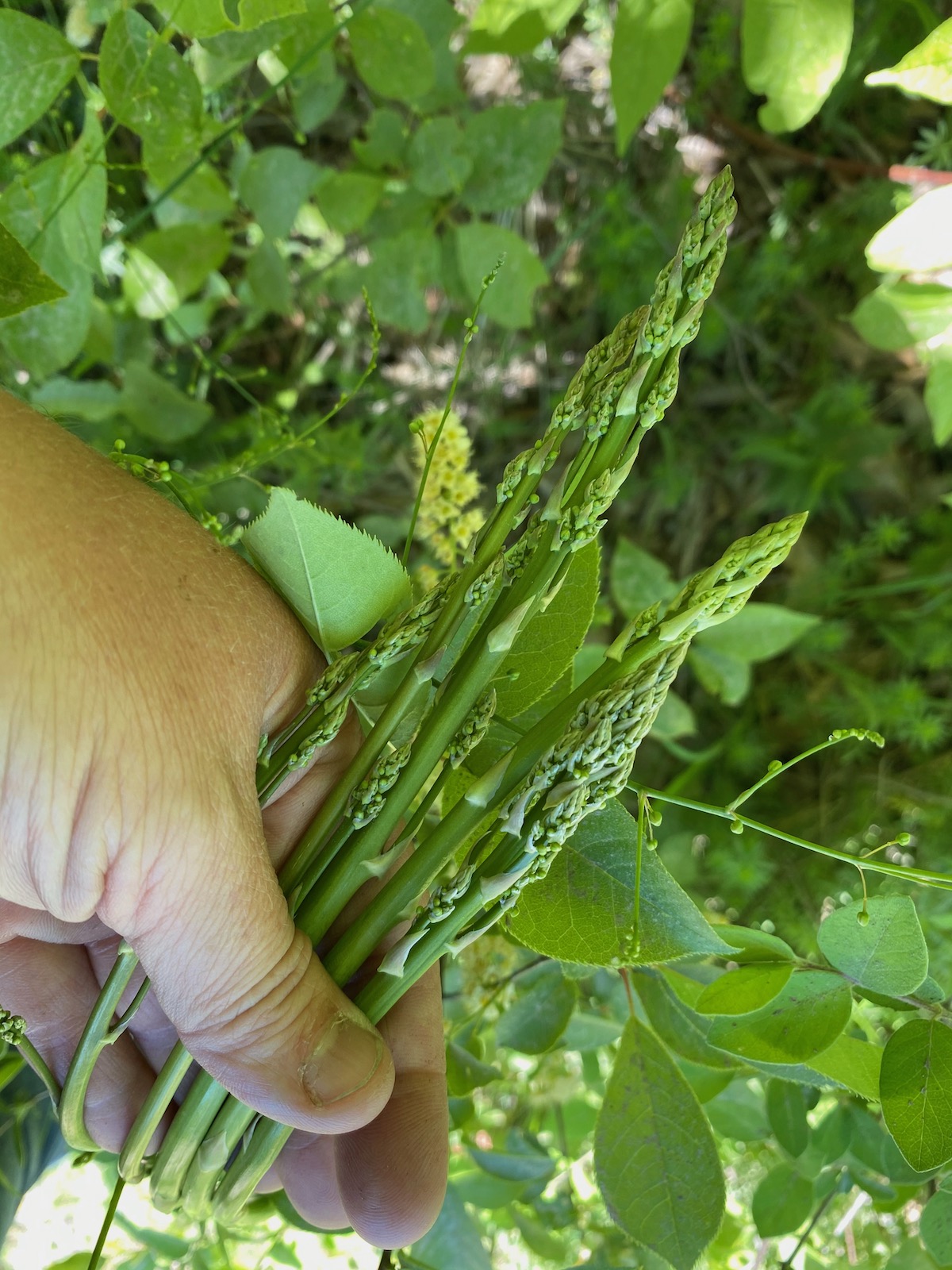
How to Harvest Wild Asparagus
The best-case scenario would be to use a knife or clippers and cut the steam off right at or slightly below ground level. I had not planned on collecting, so didn’t have any equipment with me, so simply dug my fingers into the soil and snapped the spear off.
Choose spears that have tight tops and are firm. Asparagus grows fast, about an inch a day, and as the individual stalk starts to age and stretch up, the little triangular leaf’s tips start to branch out and become ‘looser’. You’ll want to avoid those!
Asparagus crowns (that’s what the roots are called) will continue to produce spears for several weeks, so return often. But just like when growing asparagus in the garden, you want to leave several spears to grow up. Otherwise, you may weaken or even kill the plant.
If the spear emerges the width of a pencil or smaller, the plant is exhausting itself and you should let it be.
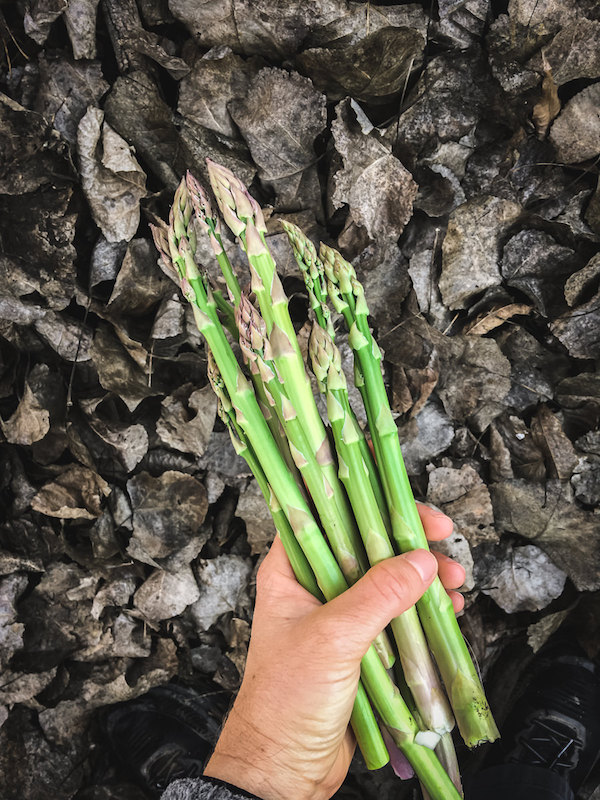
How to Prepare Wild Asparagus
If you aren’t using your asparagus right away, stand them up in a jar with about an inch of water. If left on the counter with fresh water daily, I find they keep for about a week.
You’ll want to prepare your foraged wild asparagus just the same way you would prepare asparagus from the market. Deborah Madison, my go-to reference for anything vegetable, offers the following advice:
“To trim thin asparagus, hold the stalk in one hand at the bottom and the other a few inches away. Bend the asparagus gently and let it snap where the tender and tough parts meet. With thick asparagus, you’re better off cutting…look for a color change in the stalk. Cut it there. For especially thick ones, peel about two-thirds of the way up with a potato peeler.”
Enjoy your foraged wild asparagus hot, at room temperature, or chilled. You can steam, boil, stir-fry, grill, or sautee, my very favorite way is roasting.
Spring Foraging Guides
Looking for more wild edible plants to forage this season?
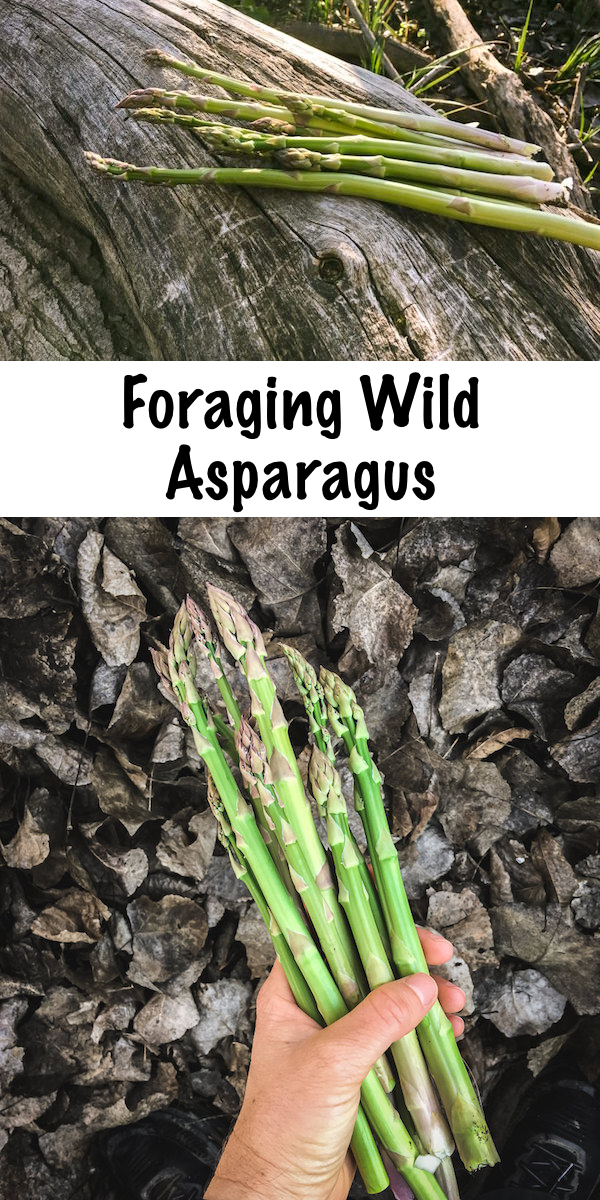




I just found asparagus in my herb garden! There are about four thin stalks, does that mean I have four plants or does one plant send up multiple stalks.
One plant sends up many stalks, so if they’re close-ish together you likely have a single plant.
I had some come up in my vegetable garden last summer! How convenient 🙂 only 2 tiny little spears came up so I let them branch out and drop seed. Hopefully I’ll have some more this year!
I love your blog… that is all. Hope it’s a beautiful day up there in VT.